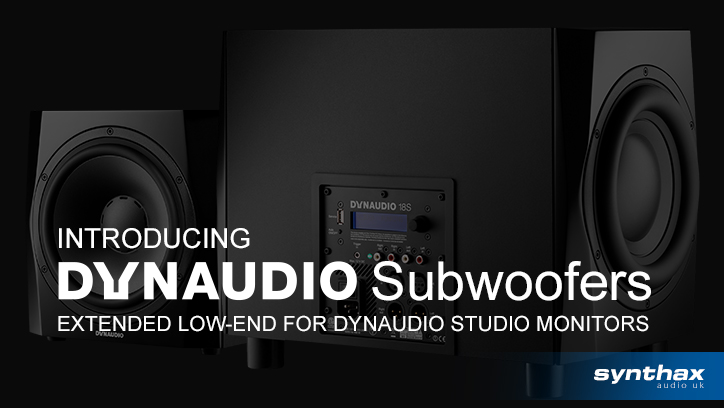
Low-End Theory with Dynaudio PRO Subwoofers
Dynaudio has been helping musicians and sound engineers make critical recording and mixing decisions in the studio for over 30 years now.
Alongside creating custom speaker installs for some of the world’s most iconic commercial recording studios, the Danish manufacturer currently offers three flavours of all-purpose studio monitors: the classic BM Series; the updated LYD Series; and the high-end Core Series.
To compliment their studio monitor options Dynaudio also has three different subwoofers in its catalogue, offering up accurate low-frequency extension for mixing rooms of any size.
Read on for an introduction to Dynaudio’s PRO range of Subwoofers, or take a tour with our video below.
Dynaudio Subwoofers Overview Video
See more videos at Synthax TV
Why add a Subwoofer?
Before we dive into Dynaudio’s PRO range of subs, let’s take a look at a few reasons why you might want to add a subwoofer to your recording studio.
It’s also worth quickly addressing a misconception some people have about subwoofers – that they’re simply designed to make the bass in a sound system louder. Whilst they can certainly be used for that purpose – and it’s something we’ll be touching on again further down – when it comes to studio monitoring, the goal is of course primarily one of accuracy, allowing us to create well-balanced mixes that translate to other speakers and sound systems.
So, here’s three reasons why you might want to add a sub to your studio monitoring setup:
1 – Extended Bass Response
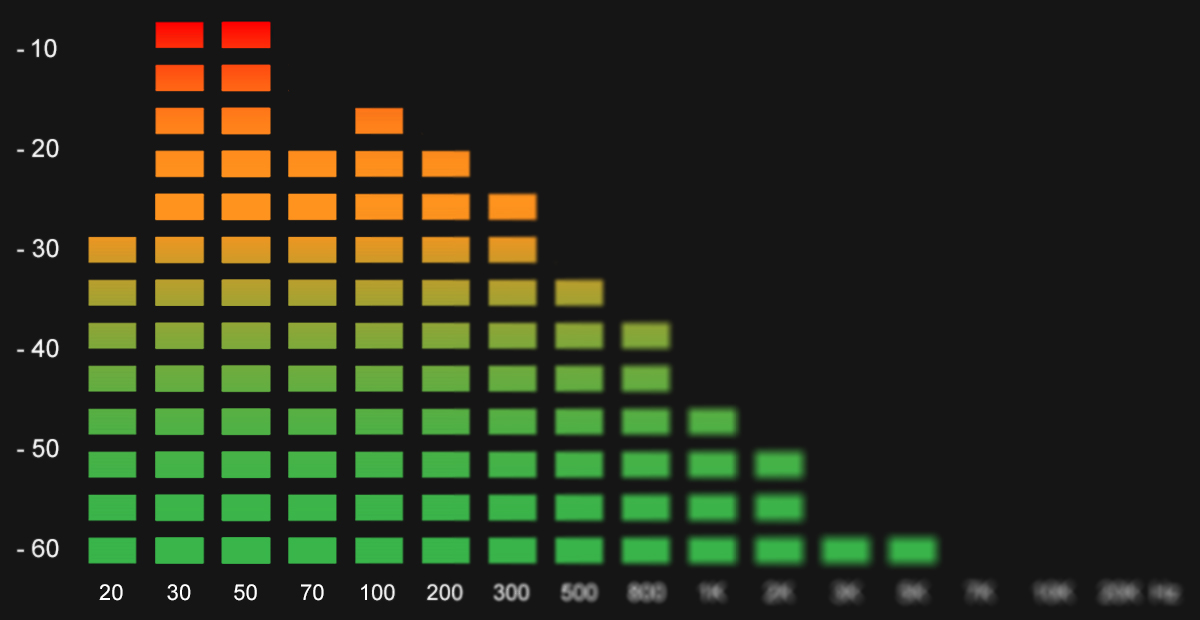 The first thing to know about subwoofers is that they provide you with an extended bass response, accurately reproducing the very low frequencies which usually begin to roll off on a standard set of nearfield monitors.
The first thing to know about subwoofers is that they provide you with an extended bass response, accurately reproducing the very low frequencies which usually begin to roll off on a standard set of nearfield monitors.
Certain instruments like bass guitars, pianos and drums for example can produce notes with very low fundamental bass frequencies of around 40Hz and even lower.
Electronic and dance music production also regularly makes use of this frequency range, using synthesized basslines and kick drums to provide the low-end energy in a track (which is often described as being more ‘felt’ than heard).
Driving these low frequencies requires a lot more effort from a speaker than for the midrange and higher frequencies, and most studio monitors aren’t capable of reproducing this range with the same power and accuracy that a subwoofer can.
Subwoofers are therefore designed to act as a kind of specialist bass-reproduction speaker, with a large driver and powerful amplifier dedicated solely to handling the lowest of frequencies.
This also has the added benefit of taking away some of the ‘heavy lifting’ from your main speakers (commonly known as ‘tops’ when paired with a sub).
By relieving some of the effort required to reproduce the bass, you free up headroom for the mids and highs, as you’re now sharing the signal with another driver and another amplifier. This allows the system to go a little bit louder without putting as much strain on the tops, which should in turn allow your monitors to operate even more efficiently, and produce less distortion.
So a subwoofer provides not only accuracy for very low notes, but also gives you a more powerful and higher output level from your entire system.
2 – Subwoofer positioning
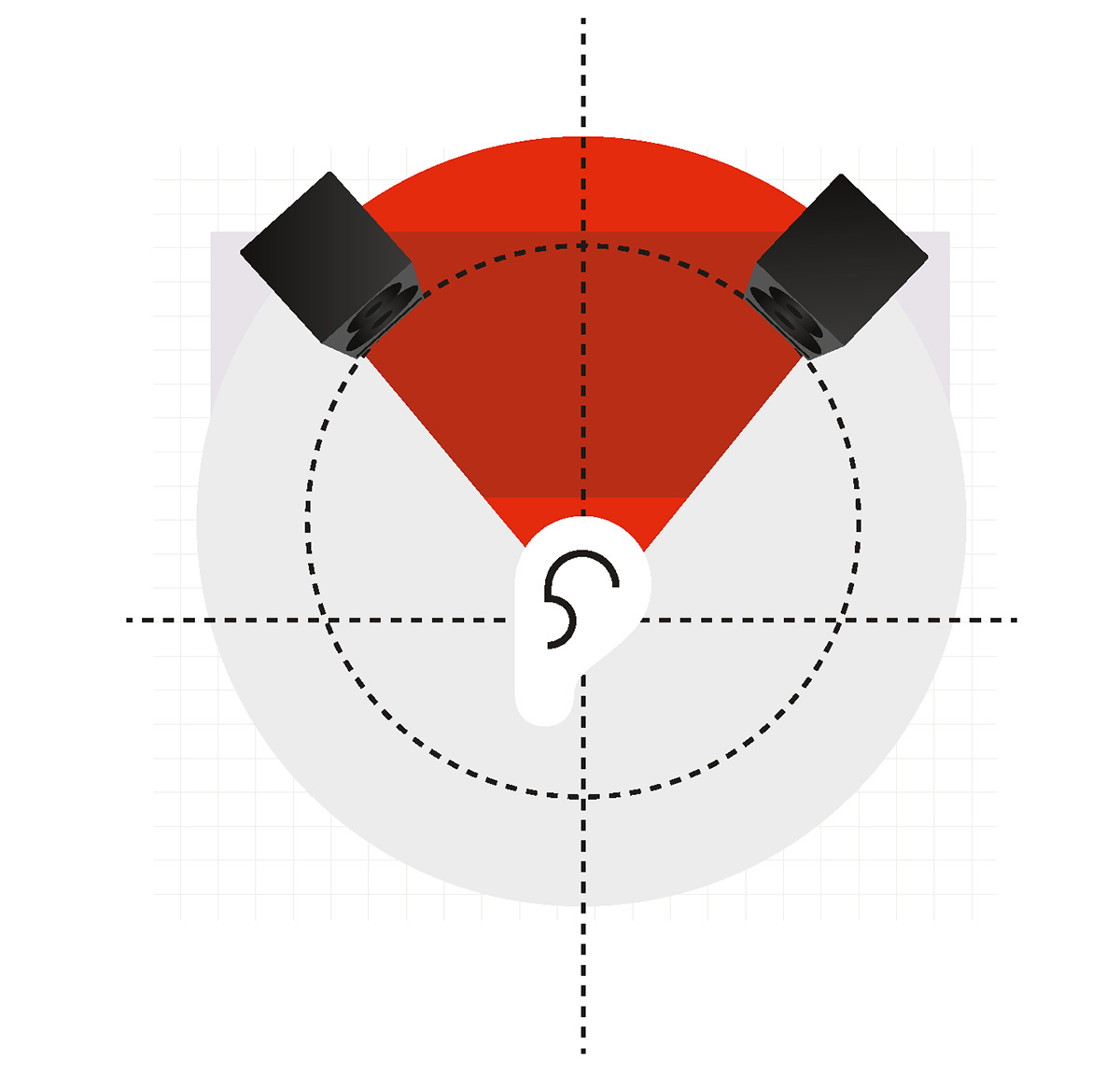 A second reason to add a subwoofer is that they allow you to tune the bass response in your room more easily.
A second reason to add a subwoofer is that they allow you to tune the bass response in your room more easily.
Unlike the tops, which need to be specifically positioned left and right of one another for accurate stereo monitoring, with a subwoofer you have more freedom regarding its positioning, as low frequencies in a room tend to have the effect of being more omnidirectional.
In fact, its worth noting that despite a lot of diagrams showing subwoofers placed centrally between two satellite speakers, this is usually not the best position for a subwoofer.
Calibrating and finding the best position for a sub in your room will take some experimentation (and is beyond the scope of this article), but the main point here is that a subwoofer gives you more freedom and control in achieving the most accurate bass response in your control room.
By adjusting the position, crossover and phase of your sub, you can better adjust how the low frequencies behave in your room, and create a more even response for your listening / mixing position.
3 – Creating a vibe
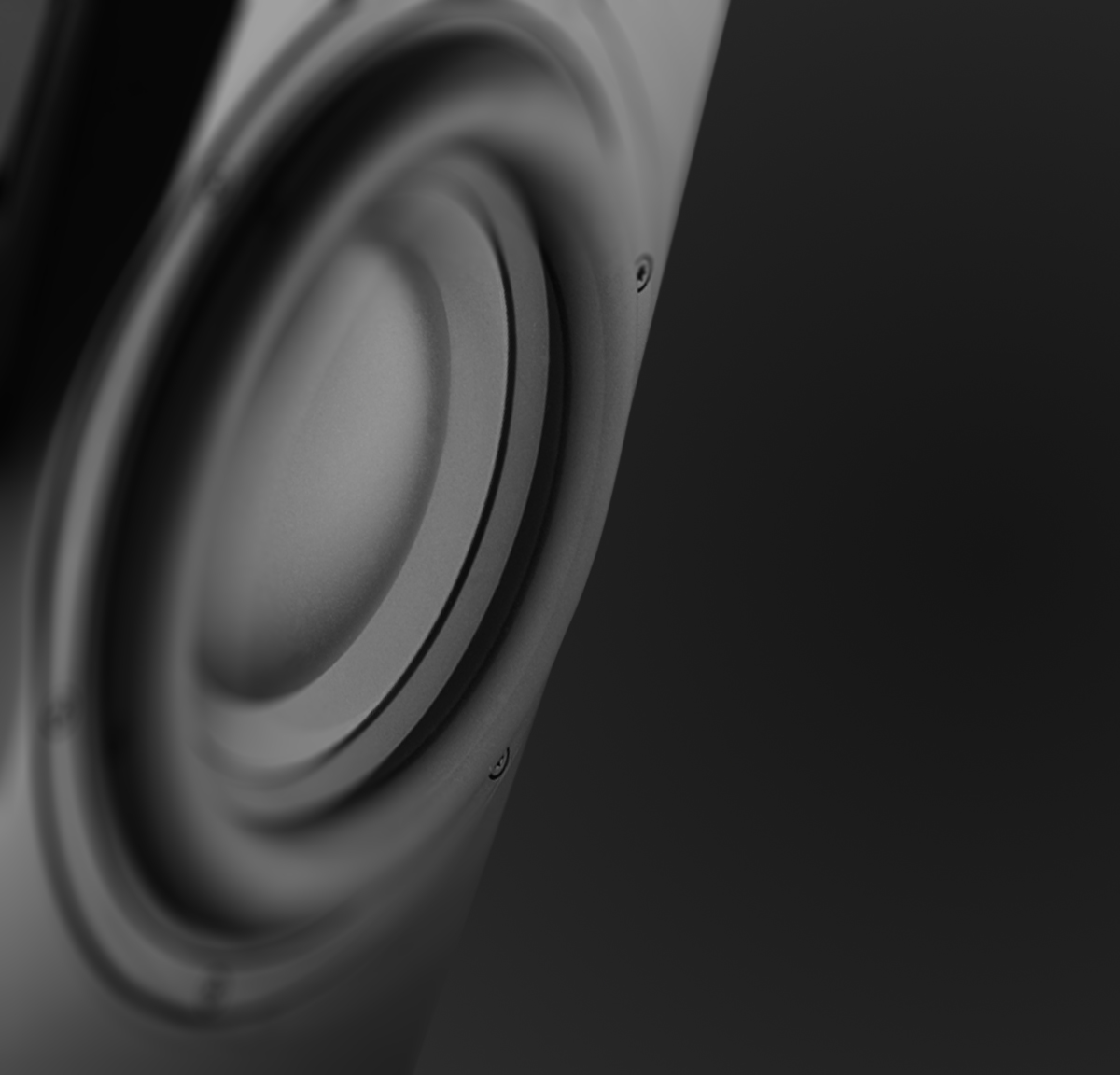
The third reason to add a subwoofer actually goes back to the point we mentioned earlier… i.e. big, loud bass!
A subwoofer can provide you with the feel and heavy thump of bass frequencies you get from live music venues and large club sound systems, and whilst shaking the walls with over-the-top bass isn’t generally desirable for accurate mixing, sometimes you just want to crank things up when you’re recording or producing.
Equally if you regularly work with outside clients, never underestimate the power an earth-shattering low note can have when it comes to impressing bands, artists or record label execs visiting your studio.
A subwoofer can provide you with some serious added energy, and they’re perfect for creating that all-important vibe when you’re coming up with ideas.
Again, we wouldn’t recommend hyping the bass when you’re actually performing the final mixdown, but it’s a great option to have when you want to impress a client, or just for the fun of cranking the bass on your latest finished track.
Dynaudio PRO Subwoofers
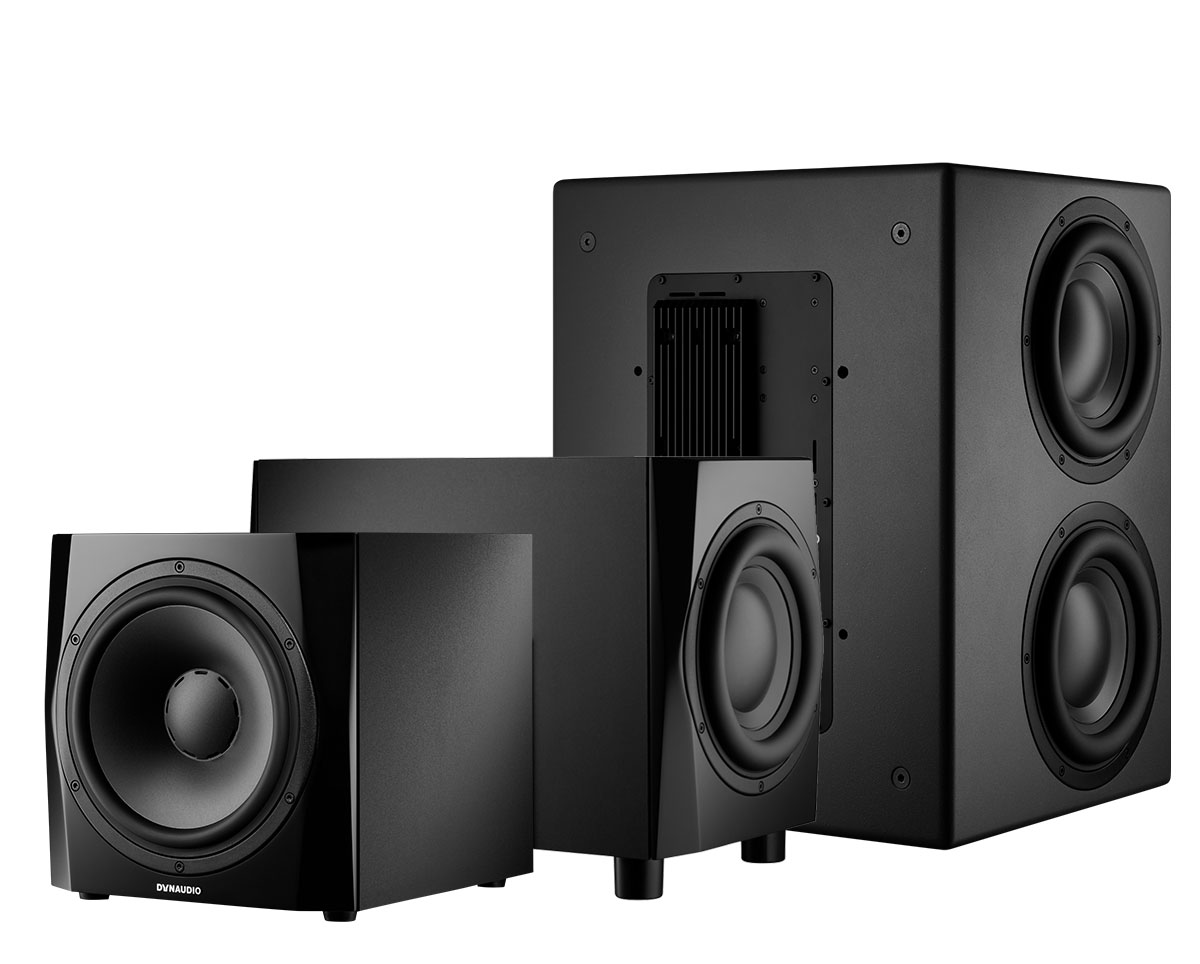 Now that we know the reasons why you might want to add a subwoofer to your studio, let’s take a look at the range offered by Danish speaker specialists Dynaudio.
Now that we know the reasons why you might want to add a subwoofer to your studio, let’s take a look at the range offered by Danish speaker specialists Dynaudio.
Known throughout professional circles for their truthful yet non-fatiguing sound, Dynaudio have been producing highly accurate loudspeakers for over 40 years, and their PRO range of subwoofers are designed around the same concept – providing precision to the lowest frequencies in a mix.
There are three subwoofers in Dynaudio’s current PRO line-up – the 9S, the 18S and the Core Sub.
Whilst the 9S and 18S have been designed as more universal subwoofers (and can be paired with monitors from any manufacturer), the Core Sub has been designed specifically as an ideal low frequency companion to the flagship Core range.
We’ll be mainly focusing on the 9S and 18S here, but we’ll also take a quick look at the Core Sub. Both the 9S and 18S are based around a 9.45 inch long-throw woofer which, just like every other Dynaudio driver, are designed and manufactured in-house at the company’s factory in Denmark.
Judge me by size, do you?
One point that’s worth mentioning about both the Dynaudio 9S and 18S is that physically, they’re both actually rather small.
The smaller 9S weighs only 10.5 kg – with dimensions of 26.6 cm (W) x 27.6 cm (H) x 32cm (D) – whilst the slightly larger 18S still on has a weight of 21.5 kg (and dims of 44.7cm (W) x 30cm (H) x 26.8cm(D)).
And whilst this might not be as visually impressive as having a chest of drawers sized-box with 15” or 18” drivers, what it does give you is plenty of freedom when it comes to positioning, as well as making it easier to find space for one in a smaller room.
Their small size and weight also means they’re fairly easy to transport, so you can easily take one round to a friend’s studio for the day in the boot of your car.
Dynaudio 9S
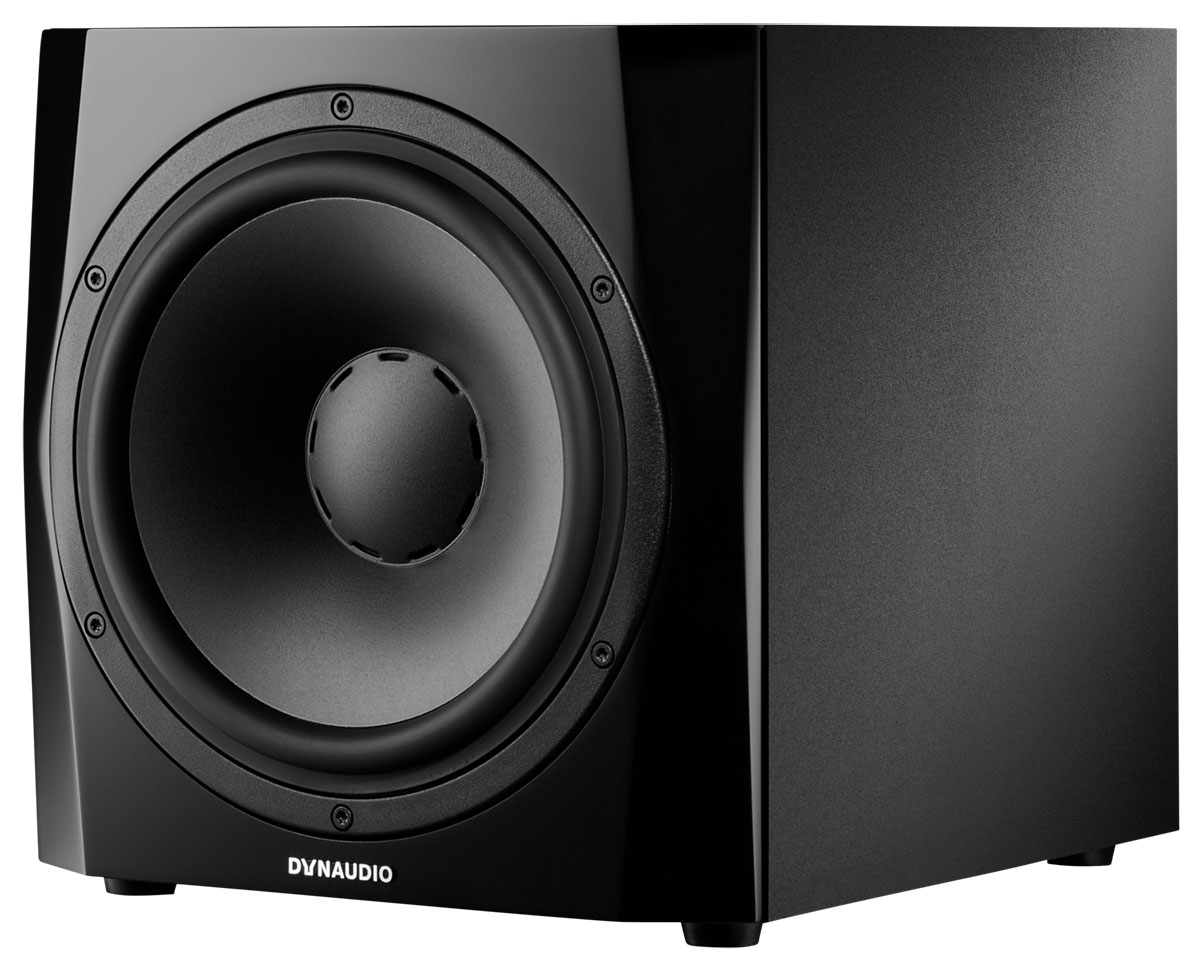
The Dynaudio 9S is the smaller of Dynaudio’s subwoofers, designed as the successor for the BM 9S II, a sub originally designed for pairing with Dynaudio’s now legendary BM5 studio monitor.
This new iteration of the 9S is designed to complement both the BM and LYD range. So regardless of whether you add it to a LYD 5, 7 or 8 stereo or surround setup – or use it with the classic BM series – it delivers a full yet focused and revealing sound.
When paired with the LYD 48s, the 9S can form the low-end element of an incredibly powerful four-way monitoring system which offers both exceptional SPL and low-volume precision.
Even with its compact size, the 9S is powered by a high-end 300W Class D amplifier which delivers a Sound Pressure Level of 104dB, with a frequency range of 22 – 175 Hz.
Connection into and out of the 9S is made via XLR – a pair for audio input and a pair to send audio on to your main studio monitors. The 9S also features a high pass filter encoder, as well as a phase invert switch for setting the correct crossover and alignment for your system.
It’s also possible to connect multiple subwoofers together with the Slave connection on the rear panel, or use the 9S as an LFE channel for working in surround sound or Dolby Atmos.
If you’re working in a smaller studio space – be that at home or in a project studio – and your mixes would benefit from more clarity in the low end without blowing the roof off (though the 9S can still do that if you want..), then the Dynaudio 9S is a very capable single-driver subwoofer that can work really well for most rooms, and a perfect accompaniment to any studio monitors, Dynaudio or otherwise.
Find out more about the Dynaudio 9S Subwoofer
Dynaudio 18S
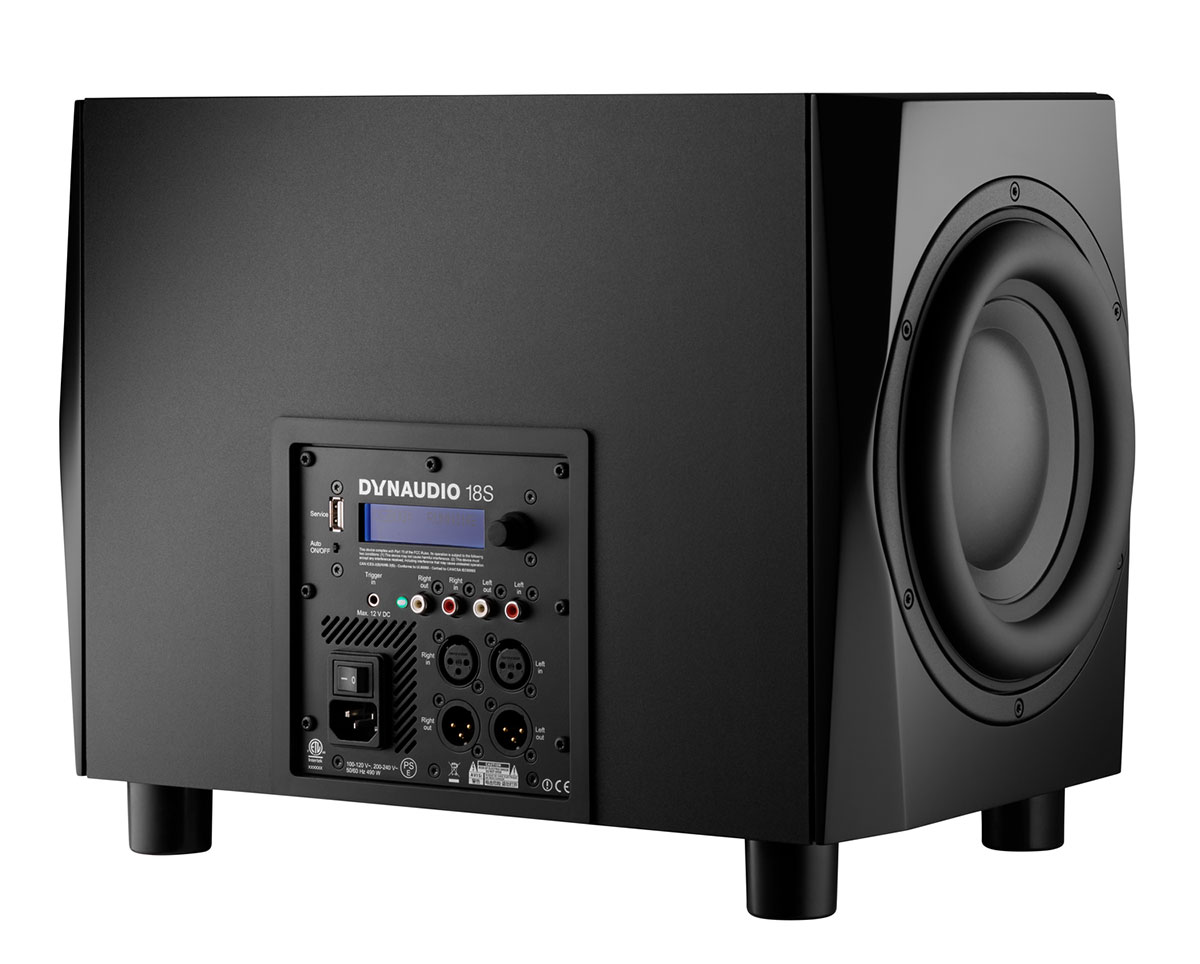
The 18S is the larger sibling to the 9S. In fact, its name comes from its driver arrangement, with one 9 inch woofer placed on either side of the sub.
This arrangement is known as Dual Opposed Subwoofers, whice helps reduce unwanted resonances and minimises cabinet vibrations through the use of two opposing drivers which effectively cancel each other out. The advantage of this is that the 18S will only vibrate due to sonic energy as opposed to mechanical energy, creating more accurate low-frequencies, and with an impressive frequency range of 16-230 Hz.
The 18S isn’t just a step up in terms of size from the 9S, it’s also an upgrade in terms of its technology.
All of Dynaudio’s studio monitors feature woofers made from their proprietary Magnesium Silicate Polymer (MSP), a material Dynaudio designed to offer just the right amount of stiffness and damping for studio monitors.
Subwoofers require a slightly different balance of attributes, so Dynaudio developed the MSP+ Hybrid Drive. Primarily made from aluminium (as opposed to Dynaudio’s standard MSP material), Dynaudio developed MSP+ specifically for accurate low-frequency monitoring.
Powering both woofers is a state-of-the-art 500W Class D amp, providing plenty of power for high volume monitoring. If you like to work at more sensible levels however, Dynaudio monitors are just as revealing at low-levels of output as they are cranked up.
The 18S features both balanced XLR and unbalanced RCA connections, giving a choice of connection methods depending on your setup.
Finally, the 18S also features advanced DSP, with presets offered for a range of Dynaudio PRO monitors. So if you have any of the LYD series or some of the BM models, the 18S can be calibrated to match your monitors and provide the best sound possible.
Time alignment settings allow you to align the phase of the 18S with your tops, whilst an on-board 3-Band parametric EQ provides options for correcting against any acoustic anomalies in your room.
When compared with the 9S, the 18S’s frequency response goes down slightly lower and also slightly higher, giving you more freedom when setting the crossover frequency.
But it also has a higher SPL – it can physically move more air – giving you more energy and a higher maximum volume without overloading. So if you’re looking for extra power and feel, the 18S is the way to go.
Like the 9S, it doesn’t matter if you’ve got Dynaudio monitors or not – the 18S can be paired with whichever brand of monitor you use. But if you do use Dynaudio monitors like the LYD or BM series, then the selection of built-in presets makes it easy to create a finely tuned full-range monitoring solution.
Find out more about the Dynaudio 18S Subwoofer
Dynaudio Core Sub
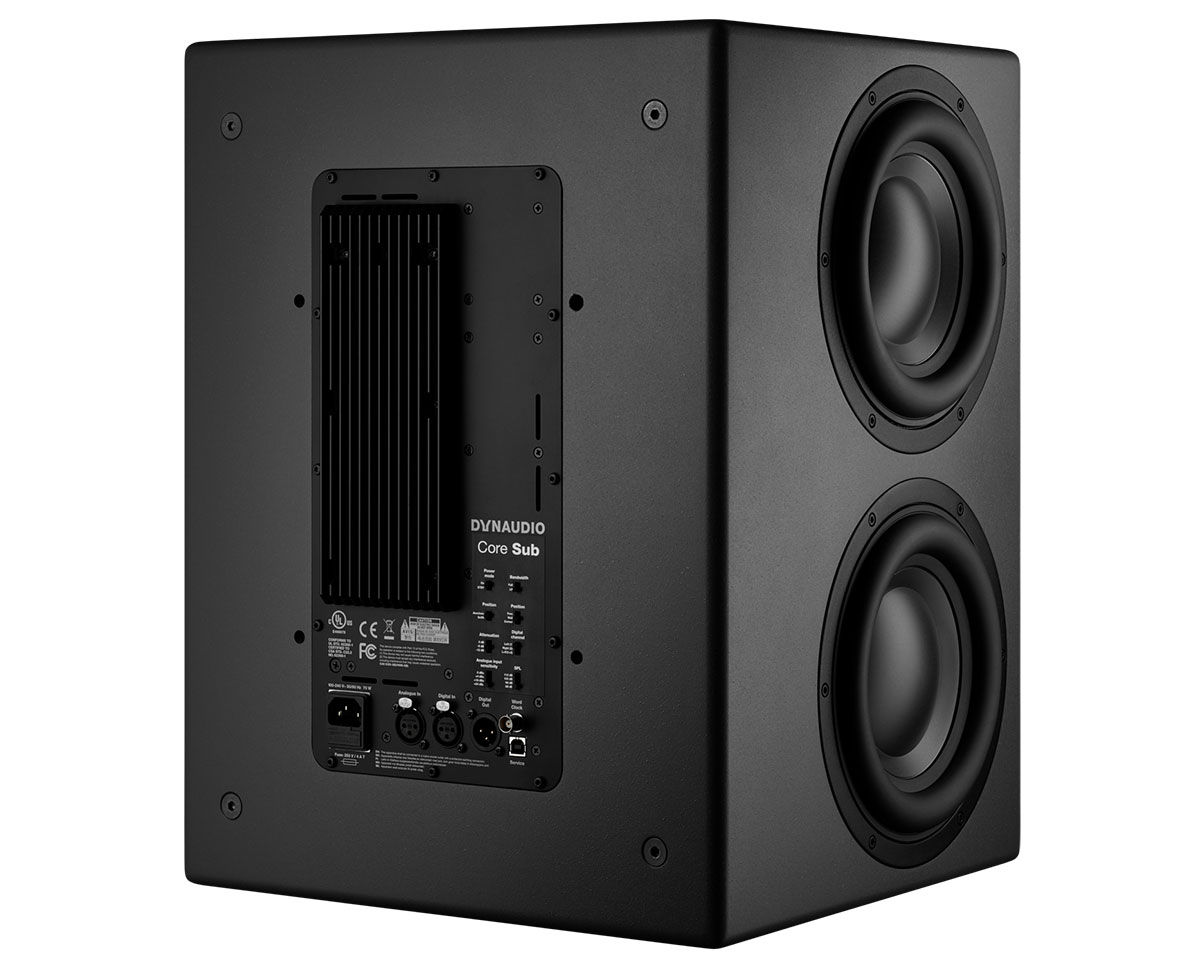
Finally, there’s the Core Sub. This massive subwofer has been designed to pair perfectly with Dynaudio’s flagship Core Series, and as such we’ll be looking at its features in greater depth in our Core Series overview.
In short, the Core Sub is built around four 9-inch MSP+ Hybrid Drive units which have several performance improvements on those used in the 18S, namely dual-action damping which ensures tight, controlled bass. This array of drivers requires serious power, and this is provided by 1000W of Class-D amplification.
Like all of Dynaudio’s subwoofers, the Core Sub has been designed to reproduce the low frequency of any audio as faithfully as possible. With a flat response down to 15Hz and a 6dB roll-off at 13.5Hz, the Core Sub can go incredibly low, offering the perfect extension for Dynaudio Core monitors, and giving unparalleled accuracy across the entire frequency spectrum.
The Core Sub also employs the same DSP engine as the rest of the Core family, which means you can customise its response based on its location in the room.
Thanks to both analogue and AES inputs, the Core Sub can be used in a wide range of configurations – from single-channel extension through 2.1-channel bass management and even as a theatrical LFE channel.
And because the Core Sub uses the same engine as the rest of the Core Series, you can be sure of a sub that works seamlessly with the other elements in any monitoring setup.
Find out more about the Dynaudio 18S Subwoofer
To find out where to buy Dynaudio studio monitors in the UK, visit our Dynaudio UK Dealers page.
See the full range of Dynaudio PRO studio monitors





















